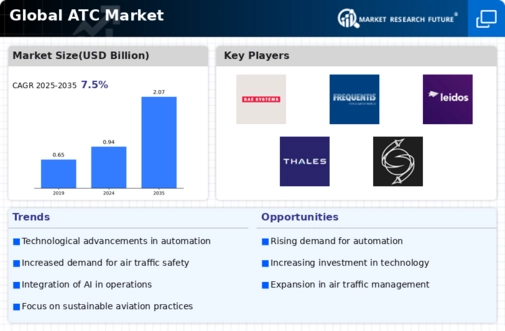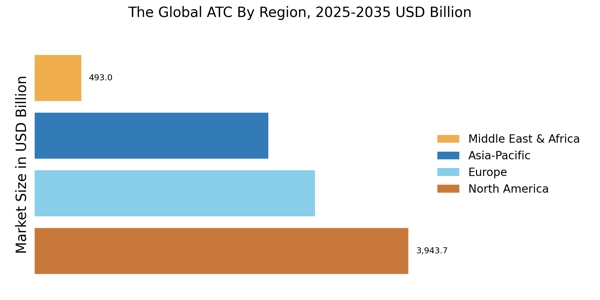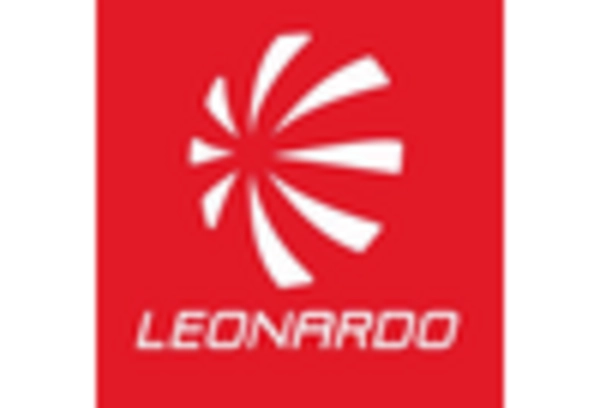Increased Air Traffic
The continuous rise in air travel demand is a primary driver of The Global ATC Industry. With passenger numbers projected to reach 8.2 billion by 2037, air traffic management systems must evolve to handle this influx. The International Air Transport Association (IATA) indicates that global air traffic is expected to grow at an annual rate of 4.3%. This growth necessitates the expansion and modernization of air traffic control infrastructure to ensure safety and efficiency. As a result, stakeholders in The Global ATC Industry are focusing on enhancing their systems to accommodate the increasing volume of flights, thereby creating opportunities for investment and technological advancement.
Regulatory Compliance
Stringent regulatory frameworks and safety standards are driving The Global ATC Industry. Governments and aviation authorities are increasingly mandating compliance with international safety regulations, which necessitates the adoption of advanced air traffic control systems. For example, the International Civil Aviation Organization (ICAO) has set forth guidelines that require member states to enhance their air traffic management capabilities. This regulatory push is likely to result in a market growth rate of approximately 5.5% annually over the next five years. Consequently, companies within The Global ATC Industry are compelled to invest in modern technologies to meet these compliance requirements, thereby fostering innovation and development.
Technological Advancements
The integration of advanced technologies such as artificial intelligence, machine learning, and automation is reshaping The Global ATC Industry. These innovations enhance operational efficiency, improve decision-making processes, and reduce human error. For instance, the implementation of AI-driven systems is projected to increase air traffic management efficiency by up to 30% by 2026. Furthermore, the adoption of satellite-based navigation systems is expected to streamline air traffic control operations, allowing for more precise tracking of aircraft. As a result, The Global ATC Industry is witnessing a surge in demand for sophisticated technological solutions that can accommodate the growing volume of air traffic while ensuring safety and reliability.
Public-Private Partnerships
Collaborative efforts between public and private sectors are emerging as a significant driver in The Global ATC Industry. These partnerships facilitate the sharing of resources, expertise, and technology, leading to improved air traffic management solutions. For instance, joint ventures between government agencies and private firms have resulted in the development of innovative air traffic control systems that enhance operational efficiency. Such collaborations are likely to attract substantial investments, as they leverage the strengths of both sectors. The Global ATC Industry stands to benefit from these synergies, as they promote the adoption of cutting-edge technologies and foster a more resilient air traffic management ecosystem.
Focus on Safety and Security
The paramount importance of safety and security in air travel is a critical driver of The Global ATC Industry. As air traffic increases, so does the need for robust safety measures and security protocols. The implementation of advanced surveillance systems and real-time data analytics is essential for monitoring airspace and ensuring the safety of aircraft operations. According to industry reports, investments in safety and security technologies are expected to grow by 6% annually. This focus on safety not only enhances passenger confidence but also drives demand for innovative solutions within The Global ATC Industry, as stakeholders seek to mitigate risks and improve overall operational safety.


















Leave a Comment